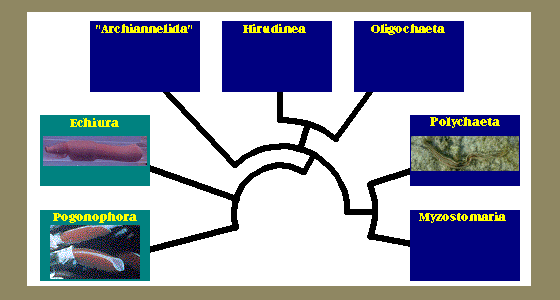



Annelida: Systematics






Annelids with a clitellum (a swelling towards the head of the animal, where the gonads are located) are classified in the Clitellata, which is further divided into Hirudinea (leeches) and Oligochaeta (including the earthworms). The Polychaeta lack a clitellum and have parapodia, paddle-like appendages with numerous bristles or chaetae. One aberrant group, the Myzostomaria, parasitizes echinoderms and is sometimes considered a separate class of annelids.
The "Archiannelida" consists of microscopic annelids that have reduced or lost many annelid features, such as chaetae, segments, and even the coelom. They are a still a poorly known group; some of them may be close to the ancestors of all annelids, but others are probably secondarily derived from polychaete ancestors. Hence they may not form a monophyletic clade, and are grouped here largely for the sake of convenience. Most are members of the meiofauna, the assemblage of microscopic animals and protists found living among sediment grains. They have no fossil record.
Two phyla that are probably close relatives of the Annelida, the Pogonophora (beardworms) and Echiura (spoon worms) are very rare as fossils, but all three groups belong to the larger group Trochozoa.


